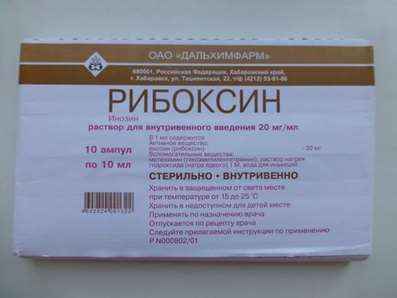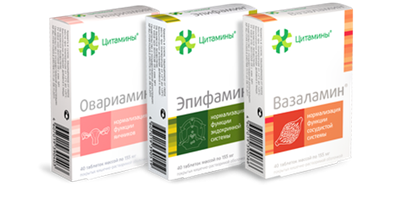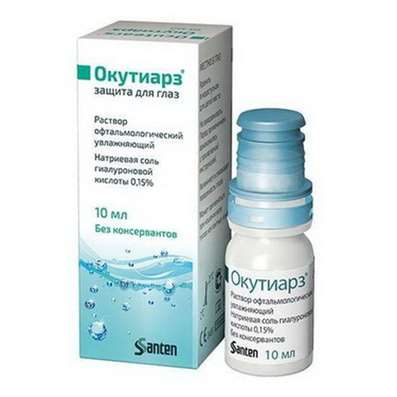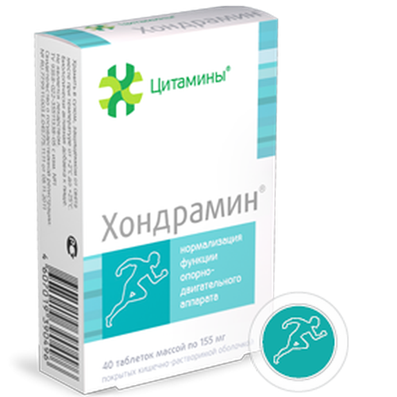Sports Pharmacology
18 Oct 2016
Author directory "Sport pharmacology" - Head of the biologically active substances department of All-Russian Scientific Research Institute of Physical Culture, MD, professor Seyfulla.
For the first time in the international practice of sports pharmacology written guide, which highlights ways to enhance adaptation to physical exertion of athletes using drugs, dietary supplements and special diet. Directory is a continuation of the development of alternative, anti-doping sports pharmacology.
RD Seyfulla, being president of the International Academy of Informatization pharmacology UN information, introduces the reader to the latest achievements of domestic sports pharmacology.
The following are excerpts from the "Introduction", "Sports and Doping", "Factors limiting athletic performance", "doping control procedure and possible fraud bioassay", "Acute poisoning doping".
Introduction
Domestic pedagogical and medico-biological system of training athletes is deservedly considered the best in the world, the basic principles of which are used in many countries in the training process and competitive activities. The challenge of improving athletes-class, as well as the development trend of high performance sport puts the biomedical and pharmacological support in a number of important problems of sports medicine and general pharmacology in particular ...
For beginners, and experienced sports doctor, not so easy to understand the intricacies of the problem of the use of drugs in sport. There is a number of fundamental issues. What can and what can not? If so, what, when and how? ..
Sports and doping
All kinds of physical activity are divided by the intensity of loads at a very high, high, medium and low intensity. This corresponds to the level of sports qualification of top-class athletes (Olympic champions and world champions), masters of sports of international class masters of sports, fuses, persons engaged in physical activity not engaged in physical culture and dealing with physical therapy for rehabilitation of certain functions using given physical activity. Naturally, the requirements for these individuals, their fitness, nutrition and pharmacologic software will be different. However, they all have their limits, which limit human physical performance. It should be borne in mind that these factors limiting performance, depending on the type of physical activity, which can be subdivided in accordance with the classifications of sports into five main groups:
- 1.Cyclical sports with primary display of endurance (jogging, swimming, cross country skiing, speed skating, all kinds of boating, cycling, etc.), when the same movement is repeated many times, spent a lot of energy, and the work itself is done with high and very high intensity. These sports require the support of metabolism, specialized food, especially in the marathon, when switching power sources of carbohydrate (energy phosphates, glycogen, glucose) in the body. Hormonal control systems of these types of metabolism are essential, as in the prediction and correction pharmacological performance.
- 2.The speed-strength types, where quality is the main manifestation of an explosive, a short time and very intense physical activity (all sprint, throwing and weight lifting, etc.). In most cases these symptoms are dependent on genetic determinants and the sources of energy to ensure that such activities are fundamentally different at the manifestation of endurance. There are cyclic sequence of motor actions (running, racing) and acyclic (throw). It is very difficult to improve the result by one hundred meters, while the strength and endurance training are more prone to stress. The same applies to the pharmacological correction. Natural Born sprinters have a high percentage of fast-twitch muscle fibers in comparison with the long-distance runners. Speed is very demonstrative indicator that undergoes with increasing age of the earliest and pronounced decline in comparison with the strength and endurance. The increase in body weight in all throwers and weight lifters require special monitoring of specialized nutritional and catabolic shift in the anabolic phase of metabolism without the use of anabolic steroids and growth hormone. At the same sprinters unacceptable uncontrolled weight gain. The prevailing carbohydrate metabolism and energy sources: energy phosphates, glycogen and glucose. It becomes clear the problem of pharmacological correction (Mildronate).
- 3.Martial arts are very numerous types of sports activities (all kinds of wrestling, boxing, etc.). A characteristic feature of the energy consumption in the martial arts is a fickle, cyclical levels of physical activity, depending on the specific conditions of the struggle, even though, at times, they reach very high intensity. Type of physical activity, its duration and intensity are the basis for the selection of pharmaceutical products. These sports, in most cases, quite traumatic, that can cause disorders of microcirculation and metabolic processes in the brain, therefore it is necessary to use drugs as protectors nootropic action (Phenotropil, Noopept).
- 4.Game types are characterized by constant alternation of intense muscle activity and relaxation, when the athletes are not involved directly in the game episodes. Of great importance are the coordination of movements, and mental stability. Tasks related to the pharmacological ensure correction of the recovery process, energy compensation, improvement of metabolic processes in the brain with the help of vitamin complexes, nootropics, adaptogenic plant and animal origin, as well as antioxidants (Cytamines).
- 5.Difficult-focal species based on the finest elements of the movement, as is the case in figure skating, gymnastics, diving, shooting, requiring excellent speed and attention. Physical activity varies widely. For example, to make the difficult jump, you need a huge explosive force, while at shooting requires concentration and a decrease tremor. Of great importance is increasing the mental stability of herbal preparations soothing action (valerian, hawthorn without alcohol components), nootropics, vitamin complexes, energy-rich foods.
- 6.It is difficult technical types is largely associated with the use of technical equipment (auto racing, bobsled, parachuting, sailing and many others). The level of physical activity may not reach very high values, but the tension is at the limit of human capabilities, which defines the principles of pharmacological correction - improving mental stability (Afobazol, Phenibut).
In addition, there are a number of mixed sports where there are different types of combined events, including the listed types of physical activity of the person. Naturally, pharmacologic maintenance tasks differ significantly and fundamentally. I should add that there are many problems with the restoration and maintenance of the high intellectual level of the competition in chess as a sport.
Thus, there is no reason to believe that there are universal pharmacological tools that could help solve the unique challenges of sports pharmacology.
Thus, sports activities include virtually all types of physical performance as a dynamic and static. Next, we consider the pharmacological agents that affect endurance, speed, strength, coordination, taking into account the intensity of physical activity.
Over the past 15 years found that depending on the sport in various countries following dopes applied.
The use of performance enhancing drugs in sports:
- 1.The speed-power types: weightlifting, throwing, bodybuilding, sprint in athletics, swimming, skating, cross-country skiing, race, racing.
- Doping: Anabolic Steroids, Growth Hormone, Gonadotropin, Amphetamines, Diuretics and Mildronate, others.
- Complications: Abrupt changes: metabolic, hormonal, and masculinization of women and virilization of males.
- 2.Sports with a primary display of endurance, cyclic sports: running, swimming, skiing, bike racing, speed skating (long distance).
- Doping: Anabolic Steroids, Growth Hormone, Gonadotropin, GW1516, Blood Doping, Nootropics and other stimulants.
- Complications: The loss of orientation and consciousness, deaths, violation of hormonal status, and others.
- 3.Game types: football, basketball, rugby, baseball, hockey and hockey, handball, volleyball, golf and others.
- Doping: Alcohol, cocaine, heroin, amphetamines, marijuana and others.
- Complications: Death, loss of consciousness, toxic effects.
- 4.Difficult-coordinating sports: high jump, diving, figure skating, gymnastics, fencing and others.
- Doping: Alcohol, narcotic analgesics, tranquilizers, beta-blockers and others.
- Complications: Drug addiction, alcoholism, and others.
- 5.Martial Arts: all kinds of wrestling, boxing, martial arts and others.
- Doping: Narcotic analgesics, marijuana and alcohol.
- Complications: Drug addiction and others.
In equestrian sport, various doping depending on the specific tasks (stimulants, tranquilizers and other drugs), so conducted doping control of horses.
Factors limiting athletic performance
Currently, a lot is known about the biophysics, biochemistry, morphology and physiology of muscle contraction. Molecular hybridization methods elucidated the role of Actin and Myosin, fast and slow ultrastructure fibers and pathway leading to the synthesis energy molecules of electron transport in the mitochondrial respiratory chain, the role of free radicals in the regulation of biological membranes functional lability and locomotor activity in mammals. However, there are major gaps in the understanding of the principles of pharmacological correction of physical human health as a result of significant differences between the data obtained on simple biological models in molecular biology and trials of drugs to sportsmen of high qualification (including micro-biopsy with the analysis of the ultra-structure of muscle fibers, marker enzymes of mitochondria, features the dynamics of metabolism, hormonal and others), whose main qualities are strength, speed, endurance, coordination of movements, and much more ...
... With the evolution of all living things appear arbitrary forms of movement that are controlled by the body and need to be self-powered.
In the process of life in higher organisms as a depot of energy and methods for its implementation movement can be divided into aerobic and anaerobic. They differ in the duration of the work and participation of oxygen.
Anaerobic alaktatic for short and intensive work (sprint) - without O2 formation of lactic acid (alaktic) due to the energy phosphates.
Anaerobic lactate for medium distances - without participation of O2 to produce lactic acid (lactate), and glucose oxidation and glycogen.
Mixed zone anaerobic-aerobic energy performance characterized by using O2 involving glycogen and free fatty acids as an energy source. The ratio of these processes, oxygen, energy is represented:
Anaerobic
1. ATP → ADP + P + free energy,
2. Creatine Phosphate + ADP → Creatine + ATP,
3. 2 ADP → ATP + AMP
4. Glycogen or Glucose + P + ADP + ATP → lactate.
Aerobic
5. Glycogen, Glucose, fatty acid + P + O2 + H2O → CO2 + ATP.
The accumulation of energy in the cells occurs due to intake of energy of the animal and plant products. Energy value of these products can be presented as follows: carbohydrates provide 60%, fat 25%, protein 15% of the energy to do the work. accumulation or recovery rate at the preliminary energy consumption can vary greatly depending on the functional state of the organism, of the sport, as well as the effect of certain drugs.
Motor activity is provided by human muscle contractility which is dependent on the rate of accumulation and power consumption. Between consumption and recovery of energy there is a dynamic equilibrium, which depends on many factors and is a significant difference in the women's 50 meters and 42,195 kilometers. In principle, the following possibilities:
• restoration of the normal and the normal flow - optimal performance;
• Insufficient recovery and normal consumption - reduced performance;
• normal recovery, and increased consumption - reduced performance.
Therefore, to maintain constant energy depot or should reduce consumption and increase recovery. When the sporting nature of problems flow intensity increases tenfold, and reduce it can only reduce the physical load, which is unacceptable, especially in a competitive activity. There remains a real opportunity to accelerate the recovery of the energy depot by dietary factors and pharmacological agents acting as a proof-of economization or accelerate the "ignition" of nutritious foods.
Therefore, to improve the efficiency of energy necessary to accelerate the recovery of the depot. R. Astrand gives the following values of the energy capacity of the main products in energy calories a person weighing 75 kg:
Energy products:
- ATP - 1.5 Kcal
- creatine phosphate - 3.5Kcal
- Glycogen - 1200Kcal
- Lipids - 50000Kcal
As you can see, the energy reserves of the human body vary greatly according to the method of its storage. For endurance it very much, but for the sprint - is very small. It follows that, first of all, it is necessary to provide sufficient energy to perform work in a particular sport and in particular during the preparation of (micro-, meso- and macrocycles, and after the event). The team doctor must calculate any necessary products, their ratio (proteins, fats and carbohydrates, water, electrolytes, minerals and vitamins) and the number. Depending on the training period (or competition recovery) the power consumption can be 1500-10000 calories per day. Power athletes in the training process, precompetitive period, the competition and after the competition has a dramatic difference. Given these differences, it is possible to think about the practical application of the additional resources that affect the dynamics of sports training.
human performance, is one of the most important qualities that testifies to his physical condition and capabilities to adequately respond to changing environmental conditions, that is, to adapt to them.
The movement formed in the brain, and is implemented at the periphery, which implies the indissoluble unity of the multi-stage system of regulation in traffic management, as well as energy supply, delivery of metabolic products to the working muscles, release of waste substances and their elimination from the body. It is this multi-level system is the object of the action of pharmacological agents which are means of correcting its functional state.
Designed by B.C. Farfel about 60 years ago, and power classification of zones, which are widely used in sports practice and in the theory and methodology of physical education, has been drawn up on the basis of the analysis of world achievements in running men. According to the author, the plot of "speed - time" is divided into four zones, called "zones of relative power."
The first zone is characterized by maximum power, where time is no more than 2-3 tens of seconds and, as shown by later investigations of other specialists, limited resources, energy phosphates muscle cells, particularly creatine.
Middle distance with an operating time of 3-5 minutes and a source of energy by anaerobic-glycolytic processes have been included in the second zone. This area is referred to as submaximal.
The third zone - high power, suitable for the majority of stayers distances. Power supply mixed and realized by aerobic and anaerobic processes in the run length 20-30 E chickpeas.
The fourth zone - moderate power, includes all super-stayers distance. Running time is a few hours, and power supply depends on the anaerobic processes.
After a thorough analysis, the researchers add significantly to the above concept and on the basis of large statistical material made their own conclusions on the various age groups, as well as the best world achievements. It was found that the increase in world achievements in men and in large areas of moderate power is more pronounced than in the zones of maximum and submaximal power. The average rate at which each distance is overcome by 4% in the sprint and 24% in the stayers distances higher than it was 50 years ago. It is also noted that differences in the endurance of men and women the stronger, the lower the power load (running speed).
It should be noted that 60 years ago, hardly used stimulants modern performance, and they are used very widely in the last 10-15 years. We do not think that the difference in the achievements of the athletes depends on the pharmacological effects. An important factor is necessary to recognize and improve the methods of teacher training. These prerequisites are required to discuss the specifics of the effect of different drugs depending on the power of the work, its duration and energy. Note that on "pharmaceutical preparation" in all civilized countries has received considerable attention in biomedical support rail only athletes, but also other people in need of this ...
Increased efficiency means to perform certain tasks in a shorter amount of time, the manifestation of great power qualities, mental stability, coordination and other properties. Reduced performance is the result of fatigue after intense work done or occurring disease and is characterized by a great time of its performance, decrease power, mental stability and coordination of movements.
Naturally, when the brain lesions of the cerebellum, spinal cord and peripheral nervous system pathologies gets tough, sometimes incompatible with life, as it often happens in neurological practice and sometimes in athletes.
Repairing is a consequence of its removal at the source level. In contrast to the recovery super-compensation is an increase in performance to a higher than the original level, as a result of pedagogical and pharmacological effects after use.
Adaptation to physical activity implies taking into account the speed of recovery and improve physical performance by increasing the amount and intensity of stress as a result of the training process. Pharmacological agents that accelerate the adaptation to physical stress and other extreme factors, referred to as adaptogens. At present they number several dozen, and they are successfully used in classic and sports medicine. It is advisable to name the group of medicines that reduce the physical efficiency. For example, these include antibiotics, antineoplastic agents, immunosuppressants, and overdoses of anabolic steroids, stimulants, and many other drugs.
Doping control procedure and possible manipulation of bio-samples
Doping control is carried out in all kinds of sports. It is mandatory to test the first four members of the final classification, and others - by drawing lots. After the competition the athlete is awarded a notice of doping - control services escort doping - control, that from this moment keeps it under review and accompanies him / her no later than one hour after the competition in the waiting room, where personal identification is made. Things athlete may also be inspected if there is a suspicion that the possible manipulation of the bio-sample.
The athlete must choose the capacity of 75 ml for sampling and urinate in the bottle 2/3 A and 1/3 of the bottle B. After this sealed container, and the remaining urine is destroyed. The representative of doping - control measures immediately pH (it should be at least 5 and not more than 7) and urine specific gravity (1,010 and above). If these data do not meet the requirements, it may be followed by a proposal to pass another test. The athlete must inform the representative of doping - control of which drugs were used in the last three days.
Samples A and B are placed in the container for transportation to the laboratory. All violations were noticed or athlete representative, recorded in the minutes. In order not to apply sanctions against an athlete, he has no right to refuse to give bioassay for analysis. This is followed by transportation. If the sample is found doping And then analyze the sample in the sample B. If B is also found doping, the chairman of the IOC MC collects commission meeting, where the athlete is invited intruder and his representatives, and then the results of analyzes are directed ¬ IOC president, who collects The IOC Executive Board to discuss sanctions. If the sample is not detected in doping, the monitoring results are considered negative. This was reported to representatives of the National Olympic Committee.
That such a procedure, without further detail, comes from the time the sample is taken before the conclusion of the IOC MC. Naturally, measures were taken in order to enter the service of doping - control misleading. At all stages of the transfer of samples there is a real possibility of substitution of other, containing no dope. Athletes entered manage himself (via doctors) catheter into the bladder with a capacity that accommodates the amount of urine required for analysis. At the time of urination cork is removed from the catheter, and derives not own urine, and one in which a drug can not be detected. The possibilities for manipulation exist in the doping lab, when a dirty pipette, dishes, etc. There were cases when the athlete fed a diet which contained the dopes. We conducted an experiment: the chickens injected anabolic steroids. Then the chicken meat are eaten employee of the department. Anabolic steroids have been found in his urine. Or, in water samples submitted to the laboratory added Furacilin and steroids were found ...
Acute poisoning of doping
The use of performance enhancing drugs can cause side effects, since it is quite toxic pharmacological agents. Acute poisoning doping may be a single admission of excessive doses and require immediate measures of emergency prior to the arrival of "Ambulance". From this patient's life depends on it. Below are the main symptoms and appropriate therapeutic measures in acute poisoning doping.
The main clinical symptoms and the necessary measures in case of doping poisoning
- 1.Doping: Narcotic analgesics: Morphine, Heroin, Codeine, Opium, Promedolum
- Clinical picture: Oppression of consciousness, respiratory failure, pinpoint pupils, hypothermia, hypotension, weakness of limbs, convulsions, pulmonary edema.
- Medical therapies: Maintaining breathing, until mechanical ventilation O (ALV), intravenously Naloxone, 2 ml of 10% caffeine, 2 ml Cordiamine, / in 1-2 ml of 0.1% Atropine
- 2.Doping: Barbiturates: Phenobarbital, Barbamyl, barbital, Amobarbital, secbutabarbital and etc.
- Clinical picture: Prevention of hypoxia and shock, varying degrees of depression of consciousness to complete absence, lack of reflexes, cyanosis.
- Medical therapies: Detoxification activities aimed at accelerating the excretion of Barbiturates, elimination of coma, respiratory function and support of the cardiovascular system.
- 3.Doping: Alcohol is completely absorbed into the bloodstream up to 2 hours or more, if there was a meal.
- Clinical picture: Over 1 hour 30 g metabolized 90% alcohol or beer 300 g. The main danger - respiratory depression. Lethal dose -500 g of 90% alcohol. The favorable prognosis, if we can overcome the sharp hypoxia. Different degrees of CNS depression.
- Medical therapies: Analeptics: Caffeine, Amphetamine, Theophylline, Mildronate and others do not contribute to sobering up and the ability to drive a car, you need a gastric lavage, if necessary - the ventilator and other events..
- 4.Doping: Amphetamines
- Clinical picture: Psychosis, hyperthermia, hypertension, dilated pupils, vomiting, diarrhea, arrhythmia, seizures, coma, respiratory arrest
- Medical therapies: Induce vomiting, stomach wash. PO / m, 50 mg of Chlorpromazine, anti-arrhythmic agents, Phentolaminium preparations etc.
- 5.Doping: Strychnine, Securinine
- Clinical picture: Shortness of breath, muscle stiffness and twitching, seizures, tonic seizures, and death due to asphyxia
- Medical therapies: Gastric lavage, Activated Carbon, Saline Laxatives, 10-20 ml of Diazepam, an ether-oxygen anesthesia, ventilation, cardiovascular agents, Mildronate.
- 6.Doping: Ephedrine
- Clinical picture: Nausea, vomiting, tachycardia, hypertension, mydriasis, ventricular fibrillation, collapse, loss of consciousness, death
- Medical therapies: Gastric lavage, activated charcoal, forced diuresis, in convulsions - 2.5% solution of Chlorpromazine, Aminazine.
It should be noted that also possible poisoning and codeine, diuretics, beta-blockers, tricyclic antidepressants and other drugs, but they are rare. Cases enter the firing line-shooters athletes in a deranged state after drinking alcohol.
The success of therapeutic interventions sports doctor, mainly depends on correct diagnosis and treatment of pre-clinical. Hiding reception doping is unacceptable, because it can be the cause of the death of an athlete.

 Cart
Cart





